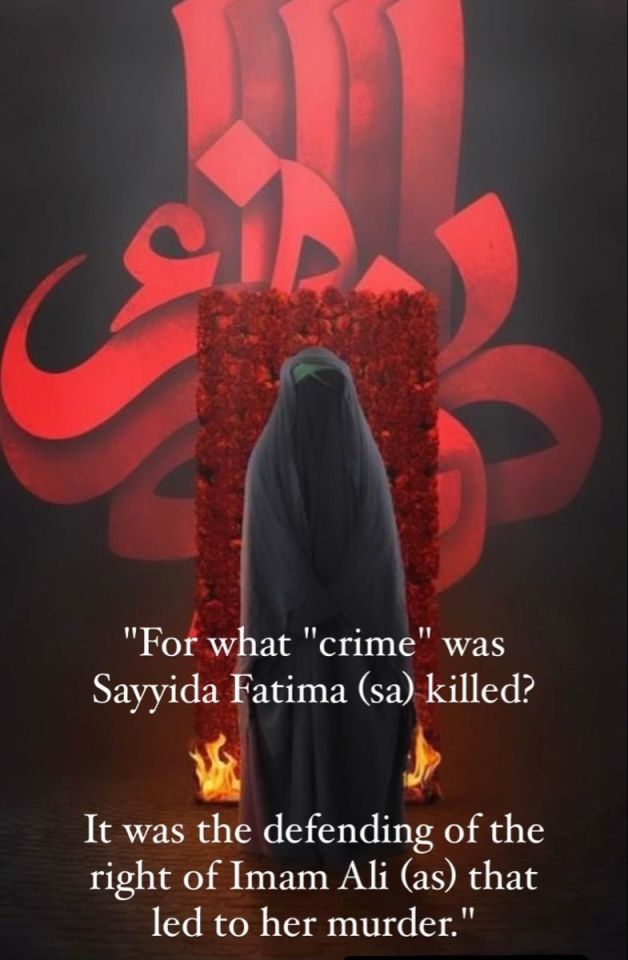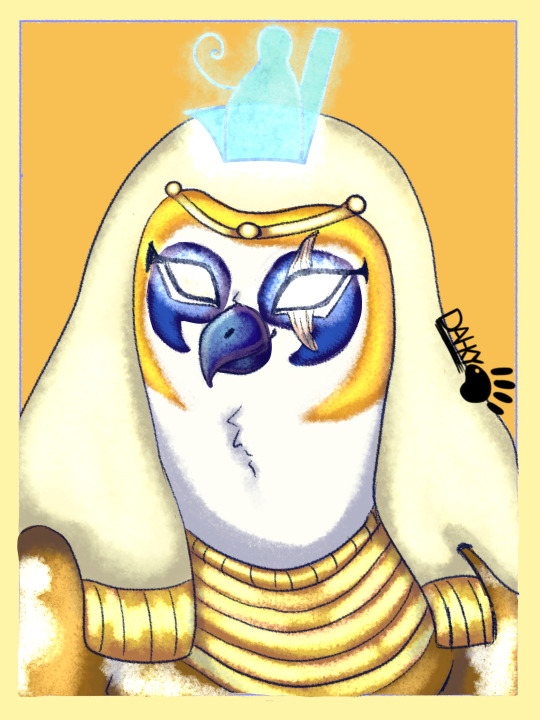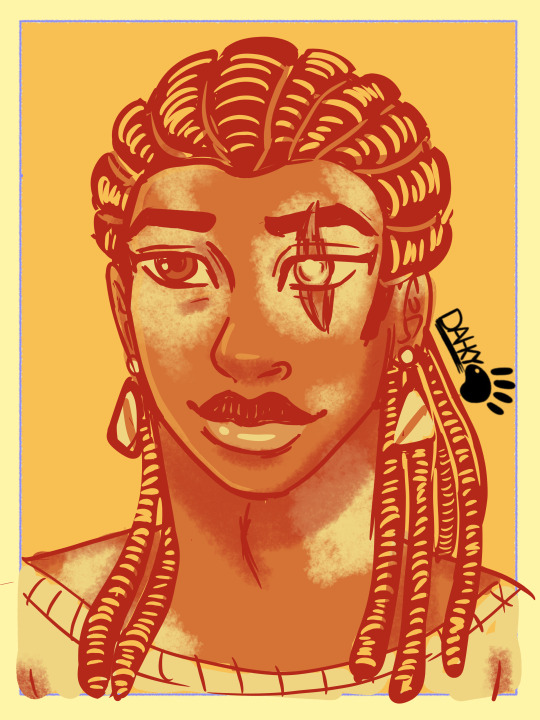#DivineProtection
Explore tagged Tumblr posts
Text
Agatha All Along tweets except it's based on the shitpost that I have in my gallery (ft. Alice x Lilia because I love them sm and they deserve more content <33)







Bonus the sillies because they are the worms in my brain /pos:

That's all, have a great day peeps!
#Agatha All Along#Agatha Harkness#Alice Wu Gulliver#Lilia Calderu#AAA#Shitpost#Rio Vidal#Agatha x Rio#Billy Maximoff#AgathaRio#Calliver#Lilia Calderu x Alice Wu-Gulliver#Lilia x Alice#DivineProtection#Jen Kale#Jennifer Kale#I miss my coven sm 😔#Coven of Chaos
260 notes
·
View notes
Text



has anyone done this yet
Kalderwu, BloodPotions, and DivineProtection my beloved
#agatha all along#jennifer kale#alice wu gulliver#lilia calderu#bloodpotions#divineprotection#kalderwu
24 notes
·
View notes
Text
Unveiling the Real Story: How Key Figures Played a Role in the Early Betrayal of Islam

The story of Islam’s birth is woven with extraordinary sacrifices, fierce opposition, and, ultimately, a complex legacy that many believe has been obscured by history. While the Prophet Muhammad (SAWW) and his close family, the Ahl al-Bayt, faced relentless hardship, the behavior of some early converts raises profound questions about loyalty and intentions. In particular, we see a sharp divide between the sacrifices of the Prophet’s family, including Lady Khadija (SA) and Imam Ali (AS), and the contrasting path taken by future leaders who would shape Islam’s political landscape.
Early Opposition to Islam and the Prophet’s Nearest Supporters
As the Prophet Muhammad (SAWW) began spreading his message, he encountered fierce resistance from the Quraysh, who controlled Makkah’s political and economic spheres. Only a few supporters stood by him unwaveringly, most notably his wife, Lady Khadija (SA), and his young cousin, Imam Ali (AS). These figures were not only the first to believe in his message but also the first to sacrifice everything they had to see it succeed. In contrast, key figures like Abu Bakr, Umar, and Uthman, while outwardly accepting Islam, seem to have faced far less opposition, enjoying protection from influential families even as true believers suffered persecution and death.
Lady Khadija: The True Mohsin of Islam
Lady Khadija’s immediate acceptance of Islam upon the Prophet’s revelation set the standard for devotion. Her role extended far beyond emotional support; she provided her entire fortune to shield the Prophet from his enemies and facilitate the spread of his message. Her wealth became a shield for the early Muslim community, funding campaigns, sheltering followers, and even buying the Prophet (SAWW) and his supporters much-needed peace amid hostile conditions.
During the intense Quraysh-imposed boycott on Banu Hashim, Khadija’s last resources were spent ensuring the community could survive in the barren valley of Shab e Abu Talib. She endured starvation, thirst, and deprivation, ultimately sacrificing her own life. This selflessness has earned her the title of “Mohsin of Islam” – the true benefactor whose generosity and faith provided Islam with the foundation it needed to endure.
In stark contrast, many of the prominent early converts, including the first three caliphs, seemed to experience a level of immunity from the Quraysh’s wrath. Figures such as Abu Bakr, Umar, and Uthman are notably absent from records of persecution and torture. Their alliances with Qurayshi families allowed them to convert without fear, raising questions about their motivations and long-term intentions.
The Persecution of True Believers Outside Banu Hashim
The divide between true believers and those protected by political affiliations is made starkly clear through the persecution of early Muslims like Ammar bin Yasir, whose parents were killed for their faith. His mother, Sumayyah, and father, Yasir, suffered brutal deaths, serving as powerful examples of the sacrifices endured by the Prophet’s early followers. The torture and killing of Banu Hashim supporters, along with the exiling of others to Abyssinia, stand in contrast to the privileged positions of certain early converts, whose families protected them from harm.
Prophet Muhammad (SAWW) received little support outside his family and close followers. The strength of Islam’s early community lay primarily within Banu Hashim, bolstered by a handful of individuals who accepted suffering in order to preserve the message. Lady Khadija’s support and Imam Ali’s courage in defending the Prophet under life-threatening conditions reflect an unwavering loyalty unmatched by those who were later poised to assume leadership of the Muslim community.
Political Calculations and Strategic Marriages: The Long-Term Ambitions of the First Caliphs
As Islam gained influence, these individuals, particularly Abu Bakr and Umar, positioned themselves strategically. Through marriage alliances with the Prophet, they sought both legitimacy and a lasting foothold in the growing Muslim community. The marriages of their daughters to the Prophet seem not to have been acts of devotion but rather calculated steps, part of a broader ambition to gain influence within the new Islamic order. These connections afforded them both prestige and an implicit claim to power—a plan that would reveal itself fully only after the Prophet’s passing.
The Prophet’s Passing and the Power Struggle that Followed
After the Prophet’s death, the struggle for leadership culminated in a sudden shift away from the Ahl al-Bayt, despite the Prophet’s repeated declarations of Imam Ali (AS) as his chosen successor. The Prophet’s family, already reeling from his loss, now faced betrayal from those who had once stood by them, or so it seemed. Abu Bakr’s swift assumption of leadership, followed by Umar and Uthman, effectively sidelined Imam Ali (AS) and the Prophet’s family from the authority that had been rightfully theirs.
This power struggle took a devastating toll on the Ahl al-Bayt, culminating in the death of Lady Fatima (SA) under suspicious circumstances. Her pleas for justice went unheard, her rights denied, and her final days marked by grief and pain inflicted by those who had once pledged loyalty to her father.
The Lasting Legacy of Lady Khadija’s Sacrifice
In comparison, Lady Khadija’s legacy shines as a beacon of true sacrifice and faith. Her contributions, both material and emotional, became the bedrock of early Islam. The lasting gratitude the Prophet felt for her was evident throughout his life; he would often remember her kindness, calling her the “best of women.” Lady Khadija’s sacrifices, alongside those of the Prophet’s family, continue to stand in contrast to the privileged lives of others who would later wield power in the Muslim community.
Her example reveals a clear divide in motives: while some were willing to give everything for Islam, others capitalized on its rise without enduring its hardships. Lady Khadija’s story serves as a powerful reminder that the truest believers are those who sacrifice without expectation, embodying the values of justice, mercy, and selflessness that the Prophet Muhammad (SAWW) cherished.
Conclusion: A Legacy of Betrayal and the Courage of the Ahl al-Bayt
The sacrifices of Lady Khadija, Imam Ali, and Lady Fatima underscore a dedication to Islam that transcends political gain—a dedication grounded in love, loyalty, and faith. These were the qualities that sustained Islam in its infancy, making their betrayal by certain early figures all the more painful. Despite the best efforts to erase these truths from history, the actions and words of the Ahl al-Bayt continue to testify to their rightful place and their sacrifices for Islam. As readers, we are left to question: if the true believers sacrificed everything, what was it that others were protecting?
#LadyKhadija#MohsinOfIslam#IslamicHistory#ProphetMuhammad#Sacrifice#EarlyMuslims#ShiaIslam#DivineProtection#SupportOfTheProphet#Khadija#IslamicHeroines#HistoryOfIslam#AhlulBayt#TruthAndSacrifice#imam ali#literature#maula ali#shia#shia islam#ya ali maddad#artists on tumblr#pandora's vault#pandora's box#pandora#SacredGrief#IslamicElegy#LightOfIslam#ShiaTradition#InjusticeInHistory#TruthOfFatimiyya
25 notes
·
View notes
Text

#FalseLove#Betrayal#ToxicRelationships#TrustIssues#HiddenEnemies#DivineProtection#GodsJudgement#ExposingPretenders#TrueColors#SpiritualWarfare#GodSeesAll#Discernment#Manipulation#GuardYourHeart#FaithAndWisdom#LessonsFromTheBible#SoulProtectors#PrayForRevelation#WalkInWisdom#UnmaskTheTruth
13 notes
·
View notes
Text


Day 32 Heru
Guess what! Heeeeerrrrreeee Heru! and a quick sketch in his human form.
Going to continue Anktober for alittle bit longer to include a few other gods like Ma'at, Tefnut n Shue, etc
#heru#horus#godofthesky#divineprotection#egyptianmythology#digitalart#akhtober#egyptian#drawing#mythology#art#day32#digitaldrawing#magic#pagan#witchcraft#illustration#simple#kemetic#firealpaca#artist#artistoninstagram#myart#dahkyarts#artistoftales#artistonig
#heru#horus#godofthesky#divineprotection#egyptianmythology#digitalart#akhtober#egyptian#drawing#mythology#art#day32#digitaldrawing#magic#pagan#witchcraft#illustration#simple#kemetic#firealpaca
56 notes
·
View notes
Text

The God I Know Amazing Supernatural Encounters with Jesus is a book about a fatherless child in Africa who experienced divine protection during the Biafran War. Victoria Udo shares her experiences with God, revealing that God is a living, supernatural figure who manifests Himself through supernatural encounters. Through these experiences, Victoria Udo encounters Jesus as the Savior, transforming her life and fostering her faith in God.
Discover the importance of setting priorities in seeking the kingdom of God and walking closely with Jesus each day by visiting the website https://www.victograce.com/ and reading more about it.
#VictoriaUdo#THEGODIKNOWAmazingSupernaturalEncounterswithJesus#ReadersMagnet#SupernaturalEncounters#DivineProtection
10 notes
·
View notes
Text

#HanumanJi#GoldPlatedFrames#TableTopDecor#CarDashboardDecor#OfficeDecor#SpiritualHome#DevotionalArt#PoojaEssentials#SacredHome#HanumanIdol#BlessingsAtWork#ReligiousArt#ElegantGifts#CulturalHeritage#HanumanBlessings#BajrangBali#SpiritualArt#HomeOfDevotion#SacredDecor#FaithAndDevotion#DurableElegance#HanumanInspiration#WorshipAndDevotion#SpiritualJourney#BlessedSpace#HinduArt#DevotionalGifts#PositiveEnergy#ArtisticFrames#DivineProtection
2 notes
·
View notes
Text
What if it didn’t work out because god was protecting you from it?
#DivineProtection#HigherPurpose#BlessingInDisguise#GodsPlan#Fate#Guidance#TrustTheJourney#DivineIntervention#Destiny#LessonsLearned#PositiveOutcome#Faith#UnexpectedBlessings#HigherWisdom#DivineTiming#UniverseHasYourBack#TrustingTheProcess#Preparation#DivineWill#DivineGuidance#MovingForward
5 notes
·
View notes
Text

Lord protect me ✝️
#Blessing#Blessings#Blessed#BlessingsandCurses#Jesus#DivineProtection#Declaration#SpiritualWarfare#Prayer#PrayerandFasting#Pray#prayerlife#Prayerrequest#PowerofPrayer#PowerofGod#PowerOfFaith#FaithInAction#FaithinJesus#FaithisSubstance#FaithinGod#Faith#PaulBackholer#MathewBackholer#MaryBackholer#ByFaith#ByFaithMedia#Backholer#ChristianInspiration
2 notes
·
View notes
Text
Sacred Stillness: A Prayerful Encounter with God
🌿 A Moment to Pause Be still, and know that I am God.” (Psalm 46:10)Take a deep breath. Release the noise, the hurry, the distractions. For these next moments, simply be present with your Creator. 🙇 Honor God – The Path to True Lifting Lord, I bow my heart before You now—not in fear, but in loving surrender. You resist the proud but give grace to the humble. I empty myself of pretense and…

View On WordPress
#DivineProtection#GenerousLiving#GospelGrace#HumbleFaith#PrayerMoments#SacredPause#SufferingAndHope#ThankfulHeart
0 notes
Text
🕉️ Unlock Abundance with the 21 Mukhi Indonesian Rudraksha Bead 🕉️
Looking to elevate your spiritual journey and attract divine abundance?
✨ The 21 Mukhi Rudraksha is one of the rarest and most powerful spiritual beads. Representing Lord Kuber, the deity of wealth and prosperity, this sacred bead invites immense blessings—both material and spiritual.
But here’s the secret: the Indonesian 21 Mukhi Rudraksha is not only lighter and smoother for daily wear, it's also revered for its subtle, high-vibrational energy. 🌿
At White Lotus Spirituality by Santosh Sharma, we offer:
✅ Authentic, lab-certified 21 Mukhi Indonesian Rudraksha Beads ✅ Energized with ancient Vedic rituals ✅ Ethically sourced & spiritually aligned ✅ Personalized guidance from Santosh Sharma, Vedic astrologer & healer
💠 Wear it for protection. 💠 Meditate with it for clarity. 💠 Keep it on your altar for divine blessings.
This isn’t just a spiritual bead—it’s a life-changer. And yes, you can now buy your 21 Mukhi Indonesian Rudraksha bead online with complete trust, only from White Lotus Spirituality. 🌸
#21MukhiRudraksha#IndonesianRudraksha#WhiteLotusSpirituality#SantoshSharma#BuyRudrakshaOnline#SpiritualHealing#DivineProtection#LordKuber#SacredBeads#VedicSpirituality
0 notes
Text
Marriage between a woman who loves to hug (Alice) and a woman who gives the best hugs (Lilia). That's it, ty for coming to my ted talks 😁
#Agatha All Along#AAA#Lilia Calderu#Alice Wu Gulliver#if you love Lilia and Alice please be my friend and talk to me 🥹#Calliver#Lilia x Alice#DivineProtection#DivineProtection my beloved#Coming out as DivineProtection CEO#I'm definitely spreading my DivineProtection propaganda in here#these two are eating my brain I'm not even joking anymore#wlw
89 notes
·
View notes
Text
The 21 Mukhi Rudraksha is a powerful and rare bead blessed by Lord Kubera, the god of wealth and prosperity. Known for its 21 natural faces, this Rudraksha brings financial abundance, success, and spiritual growth. It enhances creativity, mental clarity, and leadership skills. Ideal for business owners, spiritual seekers, and those wishing to attract wealth and prosperity, the 21 Mukhi Rudraksha is a sacred tool that fosters divine protection and harmony.
#21MukhiRudraksha#RudrakshaBeads#KuberaRudraksha#RudrakshaForWealth#DivineProtection#SpiritualGrowth
0 notes
Text
Guardians of Faith: How the Symbol of the Open Hand Finds Fulfilment in the Ahl al-Bayt

Throughout history, humanity has been drawn to symbols, images charged with meaning that seem to reach beyond the visible world and into the realm of the sacred. Among these, one symbol stands apart: the open hand, five fingers extended, quietly radiating an aura of protection, strength, and divine guardianship. This symbol — enduring for thousands of years — is found in art, ritual, and sacred artifacts from cultures as diverse as ancient Mesopotamia, Egypt, China, Japan, and beyond.
What is it about this open hand that resonates so deeply across time and place? Why did so many civilizations revere it as a source of safety, purity, healing, and spiritual power? This hand, revered across the world, seems to carry a subtle but universal message — one that has long pointed toward a hidden truth, a divine reality awaiting full revelation.
The Journey of the Open Hand Across Civilizations
1. Mesopotamia and Egypt: Divine Guardianship and Protection
In the ancient Mesopotamian and Egyptian cultures, the open hand was believed to channel divine protection. Mesopotamians crafted amulets and carved the hand symbol into tablets, seeing it as a sacred shield against unseen forces. In Egypt, hand-shaped charms were buried with the dead, signifying a protective presence that extended beyond mortal life.
For these cultures, the hand represented a promise of guardianship — an invisible protector watching over humanity, a powerful force that would remain long after the physical world faded.
2. Jewish and Islamic Traditions: The Hand as a Blessing and Defender
In Jewish culture, the open hand became known as the Hamsa, or “Hand of Miriam.” It represented divine blessing and defense, associated with the protection of the soul. Its five fingers often represented the Five Books of the Torah, underscoring a connection between the sacred law and the hand’s protective power.
In Islamic tradition, this symbol evolved into the Khamsa, or “Hand of Fatima,” a beloved talisman worn for protection against harm. In the hands of both Muslims and Jews, the open hand served as a tangible reminder of divine blessing and strength — a reassurance that, even in times of danger, a higher power was at work.
3. Japan: Purity, Protection, and Fearlessness in Spiritual Practice
In Japanese Buddhism, the hand finds expression in sacred mudras, or gestures, used to channel spiritual power. The Abhaya Mudra, an open hand raised in blessing, represents protection, fearlessness, and compassion. This gesture, seen in statues of the Buddha and bodhisattvas, reminds practitioners of divine guidance and shelter, dispelling fear and reassuring the faithful.
Shinto Rituals: In Japan’s indigenous Shinto beliefs, the raised hand symbolizes purity and openness to the kami (spiritual deities). Hands are lifted during prayers as a way to receive blessings, uniting humanity with the sacred.
Martial Arts and the Open Hand: In Japan’s martial arts, the open hand symbolizes strength tempered by restraint. In Aikido and other practices, it represents control, peace, and protection without aggression. Here, the hand conveys an ideal of disciplined strength that is dedicated to defence, not harm.
4. China: The Hand as a Channel for Vital Energy and Balance
Taoist Beliefs in Energy and Harmony: In Taoism, the hand plays a central role in channeling qi, the life energy believed to flow through all things. Certain hand gestures, like mudras or yin-yang positions, are used in meditation and healing to balance internal energies and foster wellbeing, a form of self-protection and harmony.
The Abhaya Mudra in Chinese Buddhism: Much like in Japan, the Abhaya Mudra in Chinese Buddhist art symbolizes reassurance and protection. Often depicted with Avalokiteshvara (Guanyin in Chinese), the Bodhisattva of Compassion, the open hand promises safety to those in need, embodying a commitment to mercy and spiritual guardianship.
Confucian Values and the Open Hand: Though Confucianism does not directly focus on hand symbolism, it emphasizes virtues like benevolence (ren) and justice (yi), conveyed through gestures of open hands in greetings and offerings. Here, the open hand represents peace, respect, and harmony — values essential to Confucian ethics and society.
5. Other Ancient Traditions: Christianity and Native Cultures
Christian Symbolism and the Hand of God: In early Christian art, the open hand often symbolized God’s blessing, reaching down to humanity. It represented the divine promise of protection, strength, and grace — concepts embodied in the “hand of God” extending to guide believers.
Native American Handprints as Sacred Protection: Native American tribes painted open handprints on sacred objects and cave walls, viewing the hand as a mark of spiritual guardianship and ancestral power. The hand was believed to serve as a bridge to the spirit world, offering strength and connection to those who sought divine guidance.
The Universal Qualities of the Open Hand
Across cultures, the open hand has consistently symbolized:
Protection: A shield against harm, a sign of divine guardianship that reassures and defends.
Purity: An emblem of the unblemished soul, purity of intention, and devotion to the sacred.
Healing and Balance: A connection to vital energies that sustain, heal, and bring harmony to life.
Fearlessness and Strength: The power to overcome fear, the courage to stand firm, and the strength to protect others.
These qualities reflect a universal human longing for divine care, protection, and wisdom — for figures who would embody these virtues in their lives.
The Grand Revelation: Fulfilment in the Ahl al-Bayt
Over the centuries, the open hand remained a symbol, its true meaning glimpsed but not fully known. But in the seventh century, on the sands of Arabia, this symbol found its ultimate expression in the lives of five figures, beloved to God and revered by many for embodying the virtues humanity had long seen in the open hand.
These figures, known as the Ahl al-Bayt, or “People of the House,” are revered in Shia Islam as the family of the Prophet Muhammad, peace be upon him. They embody the virtues that the hand has always symbolized: protection, purity, healing, and fearless strength.
The Ahl al-Bayt represent the fulfilment of the hand’s message:
The Prophet Muhammad: As the messenger of divine guidance, his wisdom brought unity, compassion, and strength to humanity.
Imam Ali: Known for his courage and justice, Imam Ali’s hand defended the oppressed and upheld the truth, embodying fearless strength.
Lady Fatima: The daughter of the Prophet and a figure of purity and compassion, she represents the nurturing spirit of the faith.
Imam Hasan: His dedication to peace and unity, even at personal cost, is the hand that sought to heal divisions within the community.
Imam Husayn: His ultimate stand against tyranny at Karbala symbolizes undying faith and the courage to defend truth, a testament to the hand’s promise of protection for the righteous.
For Shia Muslims, the Ahl al-Bayt are more than historical figures; they are a living legacy, embodying what the open hand had always symbolized. In their lives and sacrifices, the Ahl al-Bayt offer the ultimate expression of divine care and guidance.
Conclusion: A Symbol Fulfilled
The open hand — which once served as a distant emblem of protection, purity, healing, and strength — finds its fulfilment in the Ahl al-Bayt. This symbol, spanning millennia and cultures, is not just an ancient motif but a promise fulfilled in the lives of those who became the guardians of faith, truth, and humanity.
In the Ahl al-Bayt, the open hand transcends symbolism and becomes a legacy of divine guardianship, guiding those who seek a life rooted in faith, compassion, and strength. Through them, the ancient human desire for divine protection and guidance becomes a living reality, inviting followers to recognise in the open hand the virtues that have long united the human spirit.
#imam ali#AhlulBayt#SacredSymbols#HandofFatima#DivineProtection#SpiritualGuardianship#MysticSymbolism#IslamicHeritage#ShiaWisdom#LegacyOfFaith#GuardiansOfTruth#DivineCompassion#AncientSymbols#HandOfMercy#LegacyOfPurity#literature#maula ali#shia#shia islam#ya ali maddad#artists on tumblr#pandora#pandora's box#pandora's vault
5 notes
·
View notes
Text
17 Mukhi Rudraksha
Key Benefits of the 17 Mukhi Rudraksha
Divine Blessings: Wearing this Rudraksha is said to invoke the blessings of Goddess Katyayani and Lord Vishwakarma, aiding in achieving Dharma (righteousness), Artha (wealth), Kama (desires), and Moksha (liberation) Rudraksha Life.
Enhanced Creativity and Innovation: Ideal for professionals in creative fields, this bead is believed to stimulate innovative thinking and problem-solving abilities Shaligram Shala.
Protection and Prosperity: It serves as a protective talisman, shielding the wearer from negative energies and attracting wealth and good fortune Rudraksha Hub.
Spiritual Growth: The 17 Mukhi Rudraksha is thought to aid in spiritual practices, enhancing meditation and connecting the wearer to higher consciousness .Shaligram Shala+5Shaligram Shala+5Rudraksha Hub+5
🛍️ Where to Buy
For authentic and lab-certified 17 Mukhi Rudraksha beads, consider purchasing from reputable sources like Shaligram Shala. They offer a range of options with detailed descriptions and certifications to ensure authenticity.Shiv Kripa Rudraksha+4Rudraksha Beads+4Shaligram Shala+4
🔗 Buy 17 Mukhi Rudraksha from Shaligram Shala
🧘 Who Should Wear It?
This Rudraksha is particularly beneficial for
Entrepreneurs and business leaders seeking innovation and success
Individuals aiming for spiritual advancement and inner peace
Those desiring protection from negative influences and misfortunes
📿 Wearing Guidelines
Purification: Before wearing, purify the Rudraksha bead with clean water and milk.
Mantra Chanting: Chant the mantra “ॐ ह्रीं नमः (Om Hreem Namah)” 108 times to energize the bead.
Placement: Wear it on a Monday morning after bathing, preferably on a silk or wool thread, or encased in silver or gold.
#17MukhiRudraksha#SpiritualGrowth#DivineProtection#WealthAttraction#AuthenticRudraksha#ShaligramShala#VedicWisdom#MeditationAid#ProsperityBead#SacredJewelry
0 notes
Text
11 Mukhi Rudraksha – Ekadash Rudra ka Ashirwad | Only at Astroeshop

In the sacred world of spirituality and divine protection, Rudraksha beads are regarded as the most powerful and blessed tools for self-transformation. Among all Rudraksha types, the 11 Mukhi Rudraksha holds a unique place. Known as the incarnation of Lord Hanuman, this divine bead is also associated with the 11 Rudras—the fierce forms of Lord Shiva.
If you're on a quest for inner strength, fearlessness, and spiritual evolution, the 11 Mukhi Rudraksha is a divine blessing you should not ignore. And when it comes to authenticity, energy activation, and trust, Astroeshop stands as the most reliable platform to buy original Rudraksha online.
In this article, we’ll uncover the deep significance of the 11 Mukhi Rudraksha, its spiritual and material benefits, original pricing, and why Astroeshop is the most trusted destination to get your Rudraksha with proper siddhi (energization) and guidance.
11 Mukhi Rudraksha Original, Price and Benefits
What is the 11 Mukhi Rudraksha?
The 11 Mukhi Rudraksha is a sacred bead with eleven natural lines (mukh) on its surface, representing the 11 Rudras(divine warrior forms of Shiva). This Rudraksha is especially blessed by Lord Hanuman, symbolizing infinite courage, fearlessness, wisdom, and success.
Wearing this Rudraksha is said to awaken the wearer’s inner warrior, making them mentally and physically strong to overcome life’s toughest challenges. It aligns the mind, body, and soul for ultimate success—material and spiritual.
Original 11 Mukhi Rudraksha from Astroeshop
When dealing with spiritual items like Rudraksha, originality matters the most. Unfortunately, the market is flooded with fake or chemically treated beads. This is where Astroeshop becomes your spiritual guardian. With a 100% lab-certified original Rudraksha, sourced ethically from Nepal and Indonesia, Astroeshop ensures you receive divine power in its purest form.
Each Rudraksha is:
Energized by Vedic rituals (Pran Pratishtha)
Lab-certified for authenticity
Delivered with a certificate of originality
Customized with astrological guidance from Acharya Indu Prakash Ji
So when you buy from Astroeshop, you’re not just buying a bead, you’re bringing home the ashirwad of Ekadash Rudra.
Price of 11 Mukhi Rudraksha
The price of an 11 Mukhi Rudraksha can vary based on size, origin (Nepal or Indonesia), and the quality of the mukhis. At Astroeshop, the price typically starts from ₹6,500 and can go up to ₹15,000, depending on the bead’s size and origin.
The investment is not just in a spiritual product but in:
Authenticity assurance
Siddhi rituals performed by Vedic Brahmins
Free astrological consultation
Customization with silver/gold capping on request
And the best part? Astroeshop ensures nationwide and international shipping, making it easier for devotees worldwide to receive divine blessings.
Benefits of 11 Mukhi Rudraksha
Here’s what makes the 11 Mukhi Rudraksha so powerful:
1. Removes Fear and Boosts Confidence
Blessed by Lord Hanuman, it instills unshakable courage, self-confidence, and willpower. Ideal for those suffering from anxiety, phobias, or low self-esteem.
2. Sharpens Memory and Intelligence
It’s especially recommended for students, scholars, and professionals who want to enhance focus, memory retention, and decision-making.
3. Spiritual Protection
The wearer is shielded from evil spirits, black magic, and negative energies. It acts like an energy armor around your aura.
4. Helps in Legal and Political Victory
Due to its strong connection with leadership and courage, this Rudraksha helps in winning court cases, legal battles, and succeeding in politics or administration.
5. Balances the Vishuddha Chakra (Throat Chakra)
By activating the Vishuddha chakra, it helps improve communication skills, truthfulness, and self-expression—making it perfect for public speakers, influencers, and leaders.
6. Health Benefits
According to Ayurveda and holistic wellness, it may support healing of throat issues, thyroid imbalance, and overall immunity.
Why Astroeshop is the Best Place to Buy 11 Mukhi Rudraksha
Authenticity You Can Trust
Each Rudraksha bead at Astroeshop is 100% natural and lab-tested. The platform is well-known for its transparent sourcing, providing certified Rudraksha from Nepal and Indonesia—the two most powerful origins.
Astrological Backing by Acharya Indu Prakash Ji
Unlike other platforms, Astroeshop is backed by Acharya Indu Prakash Ji, one of India’s most respected astrologers and spiritual guides. Every purchase includes personalized guidance based on your Kundli.
Vedic Energization
Astroeshop ensures every Rudraksha is energized (siddh) by expert Brahmins using ancient Vedic mantras and rituals. This ensures the Rudraksha is not just a bead—but a living spiritual entity.
Free Horoscope Matching
Before suggesting a Rudraksha, Astroeshop allows you to upload your Janam Kundli or birth details for free analysis, ensuring the bead aligns with your planetary positions and goals.
Customization & Premium Packaging
Available with silver or gold caps
Ready-to-wear malas or lockets
Delivered in premium spiritual packaging
Includes sacred mantras and instructions for use
Who Should Wear 11 Mukhi Rudraksha?
Politicians, administrators, or people in public service
Students preparing for exams or competitive interviews
Professionals who need better communication and confidence
People facing legal troubles or court cases
Anyone seeking protection, power, and peace in life
It is suitable for all genders and ages. However, it is best worn after proper energization and astrological consultation, which Astroeshop provides without any extra cost.
Conclusion
The 11 Mukhi Rudraksha is not just a bead — it’s Ekadash Rudra ka Ashirwad, a divine force that transforms your life from within. And when you choose to buy Rudraksha from Astroeshop, you’re choosing authenticity, guidance, and spiritual empowerment.
Whether you’re seeking protection, strength, clarity, or success, let the blessings of Lord Hanuman and the 11 Rudrasguide your path.
Buy your 11 Mukhi Rudraksha today at Astroeshop.com and welcome divine energy into your life.
0 notes